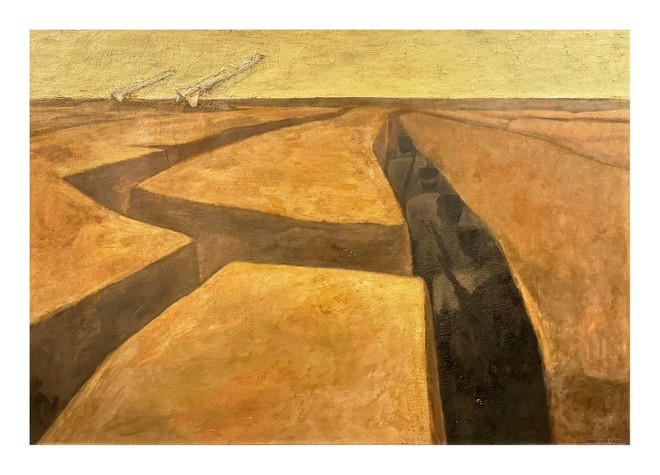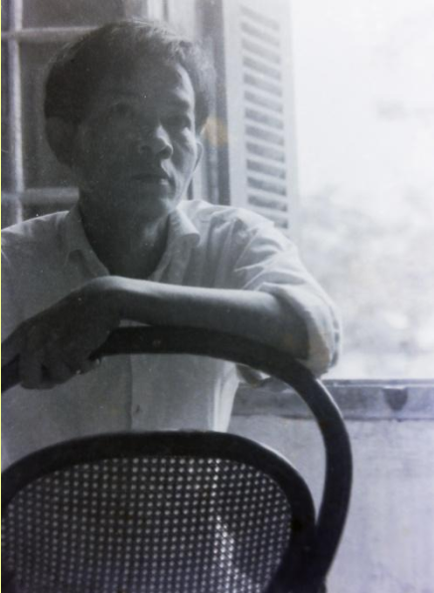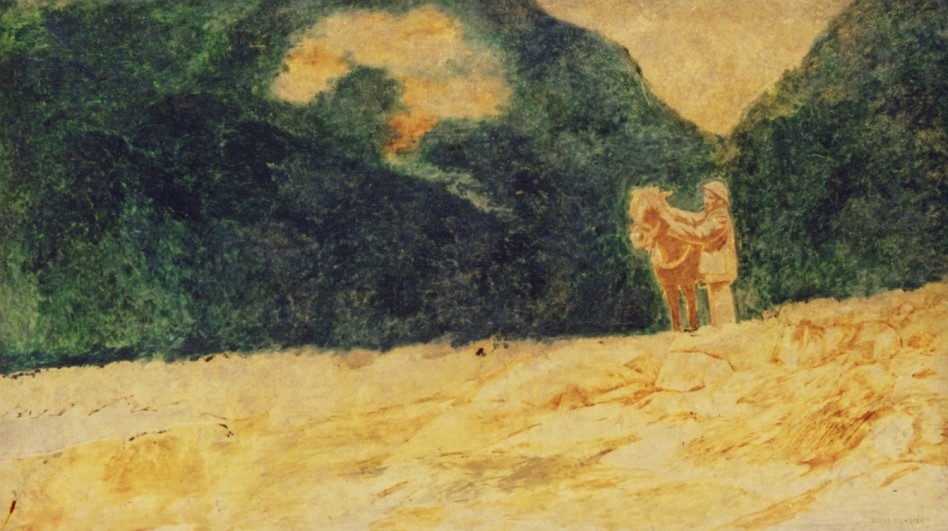Duong Bich Lien – A silent lightning of Vietnam fine arts
Duong Bich Lien's paintings show great emptiness because he lived in seclusion, reflected on his solitary life, died alone, and preserved his artistic dignity in silence.
Duong Bich Lien (1924-1988) is one of Vietnam's four great painters (along with Nguyen Tu Nghiem, Nguyen Sang, and Bui Xuan Phai). Of this quartet, he was the quietest member, but produced outstanding works of art that have greatly enriched the nation's fine arts. July 17, 2024 will be the 100th anniversary of his birth.
Strange faith of a painting
Among Hanoi's intellectual elite in the 1970s, Duong Bich Lien was a gifted and well-known figure. He received high praise for his depiction of the army's trenches during the War of Resistance, called Hao (The Tunnel), which he completed in late 1972 during the days when the U.S. was heavily bombing the nation's capital.
| Hao (The Tunnel) by Duong Bich Lien. |
As his friend, the scholar Nguyen Hao Hai, recalled, the writer Nguyen Tuan and the musician Van Cao both admired Lien and the painting, which is a rare large-format oil painting on canvas, measuring 1.47 meters by 2 meters.
To understand it properly, Hao is not only large in physical size, but also has great stature in terms of artistic aesthetics.
"If in the most famous paintings such as Rice Season or the national treasure painting Uncle Ho in the Viet Bac War Zone, the space is realistic, then in Hao, the space tends to be conventional. The whole painting exudes tranquility, like Duong Bich Lien's life," said artist Le Thiet Cuong, analyzing the empty space in Duong Bich Lien's painting.
But according to artist Le Thiet Cuong, this silence must be understood in Van Cao's words: "Now there is no big bang, but there is still a cracking sound; or we can call it a thunderous silence."
| Duong Bich Lien is one of the prominent artists of Vietnamese fine arts in the early 20th century. File Photo |
But when the painting was exhibited, Hao's value suddenly became controversial. According to scholar Hai, people had contradicting opinions about the soldiers in Lien's painting: Why did the soldiers not proudly raise their rifles and flags, but on the contrary, they looked dim and hunched over? The work was not well received. It was hung in a private room at the University of Fine Arts, where many people could criticize and comment on it.
Due to its size, Duong Bich Lien was unable to take the painting home when it was given back to him. Then the painting began its long journey. First it was lent to a collector on Hang Buom Street, then writer To Hoai knew and liked the painting and wanted to buy it. But it didn't fit anywhere, so he gave it to writer Nguyen Hong, who liked it.
But when Hong took it back to his hometown, the weather was humid and the painting fell apart. He brought the painting back to Hanoi and asked Duong Bich Lien to repair it. Unable to fix it, Duong Bich Lien kept the painting in the warehouse. It was then given to two other art collectors in Hanoi before being sold abroad for US$15,000. It was not until 2015 that the painting returned to the Hanoi public.
Hao is currently owned by a collector in Vietnam who also owns the painting Young Women with Lilies by To Ngoc Van.
| Uncle Ho in the Viet Bac War Zone, Duong Bich Lien's painting recognized as a national treasure. |
Quietly drawing, quietly living
At the seminar entitled "Duong Bich Lien: Silent Lightning" held by the Vietnam Fine Arts Museum on July 13, Luong Xuan Doan, President of the Vietnam Fine Arts Association, said that Nghiem-Lien-Sang-Phai is not only the quartet after Tri-Van-Lan-Can (four eminent painters Nguyen Gia Tri, To Ngoc Van, Nguyen Tuong Lan, Tran Van Can), which not only laid the foundation for Vietnamese fine arts, but also defined many characteristic Indochinese fine arts at that time.
The Vietnam Fine Arts Association tried to organize painting exhibitions for the four of them after the Doi Moi (renewal, started in 1986), but only Duong Bich Lien objected. Despite a fantastic career, the late artist has never had a solo exhibition.
Looking at Duong Bich Lien's quiet and reclusive life, Doan said: "The lesson Duong Bich Lien leaves for posterity is to preserve his artistic dignity in silence in the face of unwanted views at that time."
| Woman and Daisy by Duong Bich Lien. |
While Bui Xuan Phai was known for his paintings of Hanoi streets, Duong Bich Lien is known for his portraits of Hanoi women. Every painting Duong Bich Lien creates is infused with love for the subject.
Duong Bich Lien has a strange personality. Even his choice of death makes people wonder. For the last 20 days of his life, he chose to die by fasting and drinking only alcohol. He told only one close friend before he died, asking him to arrange the funeral according to his personal wishes.
Researcher Thai Ba Van once commented that Duong Bich Lien's art is a luxurious, endlessly intellectual world, "and as such, it is a dignified existence."
This person possessed an artistic personality, authority, self-respect, and a deep compassion for humanity. Hatred and conflict are left behind here, only noble silence prevails, according to researcher Thai Ba Van.
|















